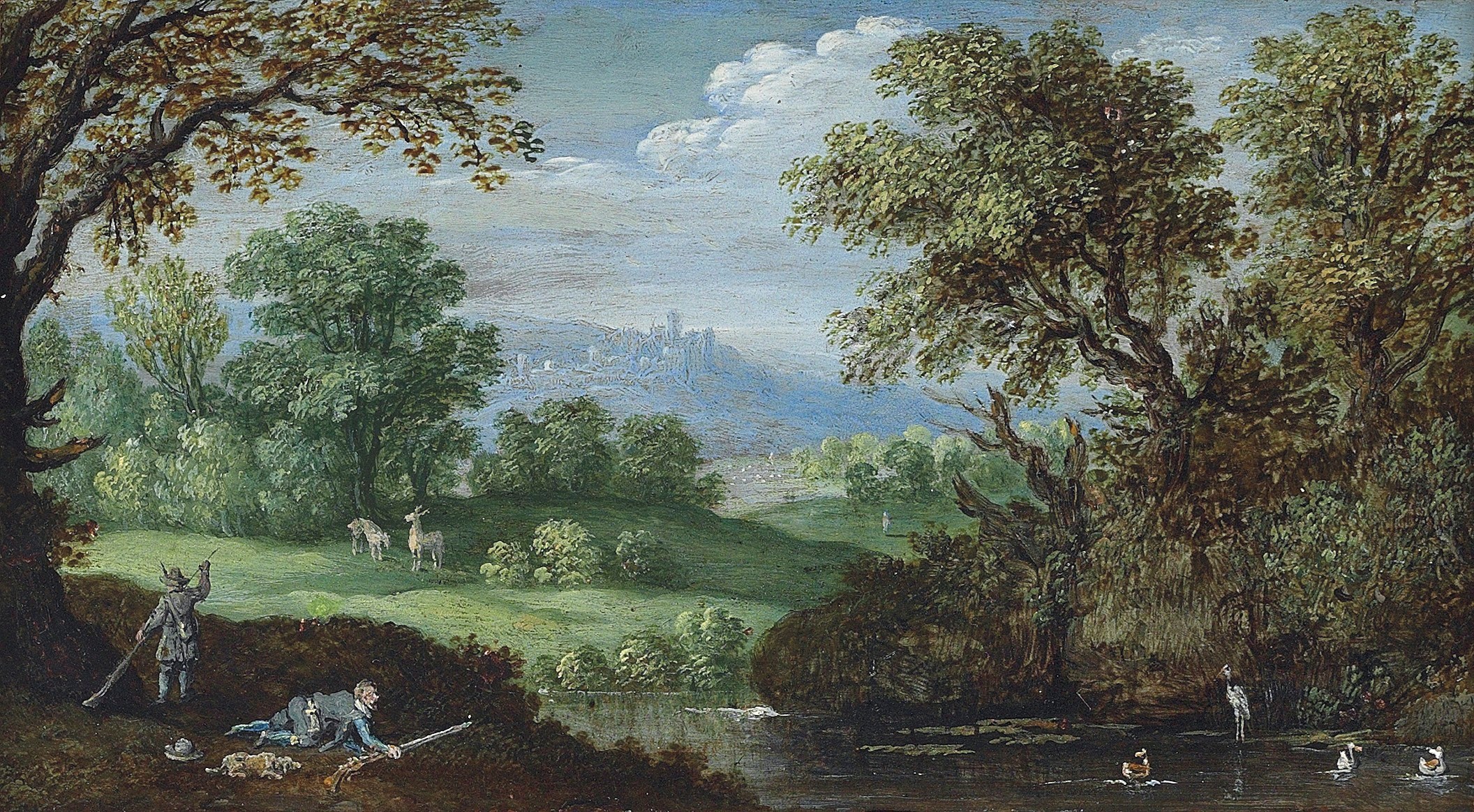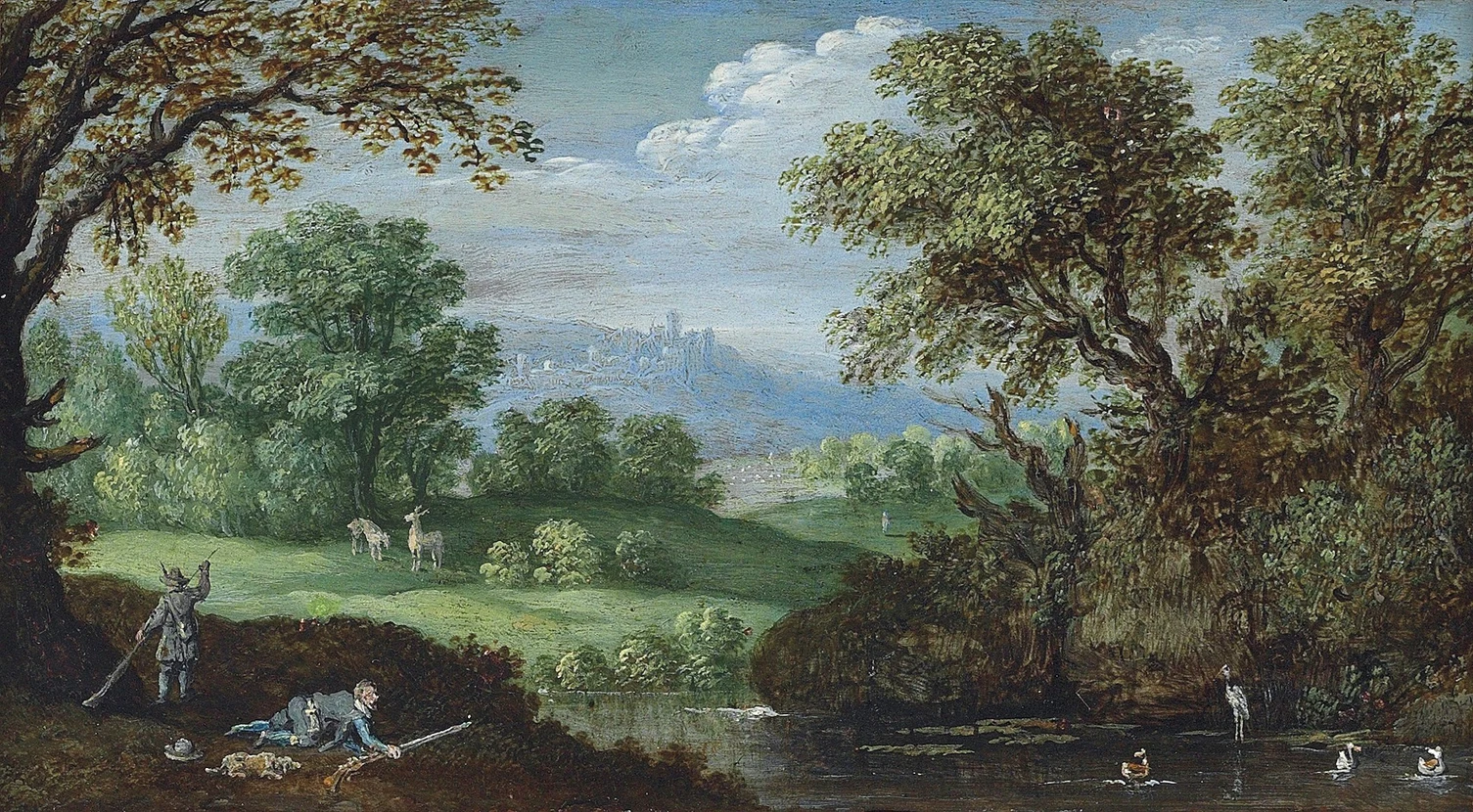A Flemish landscape painter, he was part of a family of five artists: his father, David Rijckaert I, a painter and art dealer, was his first master, and then he became a pupil of the landscape artist Tobias Verhaecht. Between 1605 and 1610, similar to Jan Brueghel I and II, he completed his training with a stay in Italy, where he was influenced by Paul Bril, whom he met in Rome. These years were crucial for the development of his landscape conception, and he created numerous drawings of the most beautiful views around Rome. He also learned to lighten his palette, bringing freshness and translucency to his paintings. Upon his return in 1611, he became the master of the Guild of Painters in Antwerp. In 1619, he also became a member of the Rhetoric Chamber "De Violieren."
Despite his handicap (he had only one arm), Marten Ryckaert developed great talent and was highly regarded as a landscape artist. He invented and perfected a personal style: strong colors or impasto in the foreground, lighter and applied in vivid touches in the distance, always with great attention to detail.
His paintings are rarely signed, but his distinctive approach to foliage in generally dense and rounded tufts, as well as certain favored motifs, allows for identification. His rendering of water is particularly remarkable. In his later works, while retaining his skill as a colorist, Marten Rijckaert shows a sense and breadth of composition worthy of the greatest landscapists. He died in 1631 at the age of 44, in full maturity.
In this small copper painting, intended to adorn a precious Antwerp cabinet, Marten Ryckaert's talent for reconciling the strength of his panoramic vision with a miniature rendering of detail is evident. The color palette is particularly bright and beautiful, with a rich and deep foreground brown and a distant landscape blending into subtle and precious blues. The construction of the composition is typical of atmospheric perspective.
In the foreground, dominated by brown tones on the left, two hunters and their dog prepare. On the right, in the river, ducks and a heron are discovered. In the second plan, a pair of deer is in the midst of green tones that enliven the meadows and foliage. Finally, the third plan is dominated by blues, with a distant city that is hinted at.
This work by Ryckaert, with its rich chromatic range, is a perfect example of his quality as a miniaturist and perfectionist.
MUSEUMS: Fitzwilliam, Cambridge UK; Uffizi, Florence; Staatl. Muse. Gg., Kassel; M.B.A., Liège; National Gallery, London; Prado, Madrid; M.B.A., Orléans; Louvre, Paris; Hermitage, St. Petersburg.

